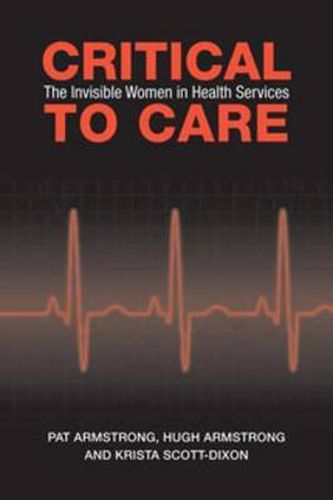Readings Newsletter
Become a Readings Member to make your shopping experience even easier.
Sign in or sign up for free!
You’re not far away from qualifying for FREE standard shipping within Australia
You’ve qualified for FREE standard shipping within Australia
The cart is loading…






Who counts as a health care worker? The question of where we draw the line between health care workers and non-health care workers is not merely a matter of academic nicety or a debate without consequences for care. It is a central issue for policy development because the definition often results in a division among workers in ways that undermine care.
Critical to Care uses a wide range of evidence to reveal the contributions that those who provide personal care, who cook, clean, keep records, and do laundry make to health services. As a result of current reforms, these workers are increasingly treated as peripheral even though the research on what determines health demonstrates that their work is essential. The authors stress the invisibility and undervaluing of ‘women’s work’ as well as the importance of context in understanding how this work is defined and treated.
Through a gendered analysis, Critical to Care establishes a basis for discussing research, policy, and other actions in relation to the work of thousands of marginalized women and men every day.
$9.00 standard shipping within Australia
FREE standard shipping within Australia for orders over $100.00
Express & International shipping calculated at checkout
Who counts as a health care worker? The question of where we draw the line between health care workers and non-health care workers is not merely a matter of academic nicety or a debate without consequences for care. It is a central issue for policy development because the definition often results in a division among workers in ways that undermine care.
Critical to Care uses a wide range of evidence to reveal the contributions that those who provide personal care, who cook, clean, keep records, and do laundry make to health services. As a result of current reforms, these workers are increasingly treated as peripheral even though the research on what determines health demonstrates that their work is essential. The authors stress the invisibility and undervaluing of ‘women’s work’ as well as the importance of context in understanding how this work is defined and treated.
Through a gendered analysis, Critical to Care establishes a basis for discussing research, policy, and other actions in relation to the work of thousands of marginalized women and men every day.